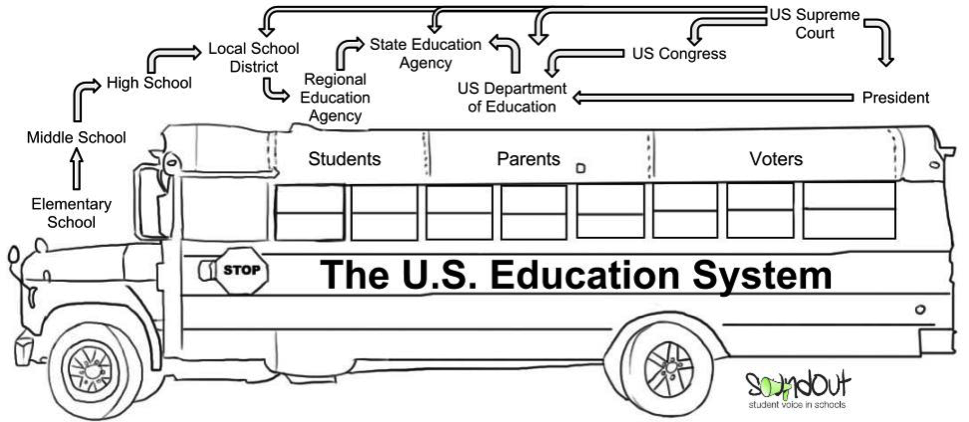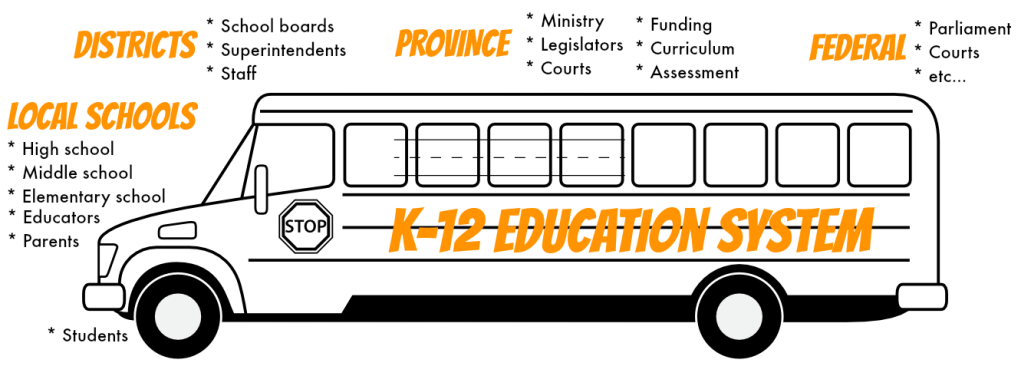“One of the things that has to be faced is the process of waiting to change the system, how much we have got to do to find out who we are, where we have come from and where we are going.”
— Ella Baker
Expanding students’ understanding of learning, teaching and leading throughout the education system is essential for authorizing Student/Adult Partnerships. Cook-Sather has explored this in-depth, starting with her important article entitled, “Authorizing Students’ Perspectives: Toward trust, dialogue, and change in education” (2002). In it she wrote,
“At the root of the terms that underlie the following discussion – authorize, authority, author and authoritative – is power: The ability to take one’s place in whatever discourse is essential to action and the right to have one’s part matter.”
— Allison Cook-Sather
Working with students requires engaging those terms in action. As explored in Part Three, the Cycle of Engagement hinges on authorization. A vital component is this understanding that power comes from increased ability, and increased ability comes from expanded understanding.

There are many topics that can increase students’ knowledge of the purpose, function, process and outcomes of education. Teaching students about the education system requires basic knowledge about the different components of learning, teaching and leadership throughout schools. Following are some areas where students can expand understanding.

Parts of the Education System
- Elementary Schools
- Middle Schools
- High Schools
- School Districts / County Education Offices
- District School Board of Education
- Regional Education Districts
- State Education Agencies / Departments of Education / State Office of Superintendent of Public Instruction
- State School Board of Education
- Federal Department of Education
- Federal Secretary of Education
Activities in the Education System
- Curriculum and Instruction
- Education Leadership
- Building Design
- Assessment and Testing
- School Culture
- Student Support Services
- Education Governance
- Community/School Partnerships
- Parent Involvement
- Teacher Certification and Renewal
- Learning Standards
- Apportionment and Financial Services
- Special Education
- Graduation Requirements
- Student Transportation
- Media & Communications
- School Breaks
- Professional Learning
- Common Core Standards
- School District Revenues
- Elementary and Secondary Education Act (ESEA)
- Federal Programs
- Learning Assistance Program (LAP)
People in the Education System
- Every student in every grade and every school
- Younger and older students
- Parent representatives
- Teachers
- District offices/Counties/LEA staff
- District superintendents
- District school board
- State education agency/department of education/SEA
- State education leader (Chief Education Officer, Superintendent of Public Instruction, etc.).
- State school board
- Federal secretary of education
- Federal department of education
Your Role
Engaging students as partners means ensuring each student has a basic understanding of their personal and collective identities. Teachers can embed this learning across all curricular areas and reinforce it with place-based learning, global education, and more. Students who are partners with adults are made distinctly aware of their skills, abilities, and knowledge, and are increasingly able to apply those understandings throughout their daily experiences of school. Embracing student voice in this way takes a lot of different forms that are examined in other articles here.
You Might Like…
- Understanding Schools
- Roles for Students throughout the Education System
- Meaningful Student Involvement Toolbox

3 replies on “Parts of the Education System”
Dynasty international is the top CBSE schools in Faridabad, play Schools in Faridabad. Get details of school lab, activity, teaching Program. Best Play Schools in Faridabad
Very interesting
Thank you very much for shedding light to différent components of education